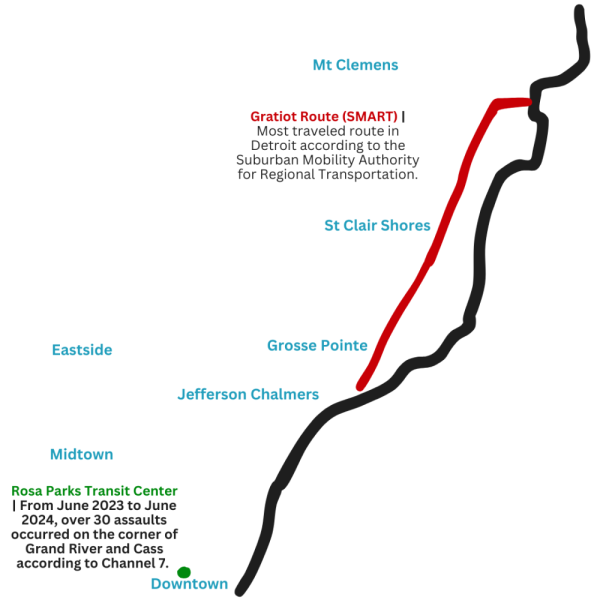PSAT takers saw a 21st-century revamp to a nearly one-hundred-year-old test when the digital PSAT debuted on Oct. 10. Since the College Board made this executive decision to switch to digital, students have expressed conflicting feelings. However, junior Jhilmil Chhaya believes that this transition will be adaptable to a larger majority of students, specifically those who struggle with time management.
The addition of the timer and shorter reading passages on the digital version, created a sense of comfort for Chhaya as she was able to more accurately pace herself.
“The timing wasn’t as stressful since I could see it all the time and we got out much earlier than the PSAT paper,” Chhaya said. “I also think the shorter English questions were easier for me to focus on and answer.”
The PSAT not only impacts students but also the entire North community, including staff, and administration. Vice Principal Geoffery Young wants to ensure that students and staff are ready to take and administer the test.
“The tests are used to evaluate us, whether we like that or not,” Young said. “The tests also measure concrete thinking skills that actually can benefit students in higher education, in careers and in life. So anytime there is a change in the test, I am immediately engaged to make sure that staff and students are able to take the test with as much ease and facility as is possible.”
While the digital version of the PSAT brings forth many unknowns related to student performance, it is without question that this version of the test is more aligned with modern-day testing-taking practices. School administrators, such as Young, advocate for modernized assessments that are aligned with current test-taking practices seen in schools to assess student learning. Young believes it is a good step forward to modernize the test.
“I don’t find too much fault with the specific skills or setup I see in this version of the test,” Young said. “There may be some inequity built into some aspects of the testing system, but I think the issues are ones North staff and students can conquer when we have the best North mindset and we challenge ourselves to succeed.”
The digital version compared to the paper test was much more relevant to current models of technology use according to junior Gruhith Yerramalli. Yerramalli preferred the modernized digital version because the paper version had a lot of bubbling which took up valuable testing time.
“For the paper one I didn’t like that you had to read a lot on the PSAT and it was just very tough in general,” Yerramalli said. “The bubbling especially was hard on the PSAT paper because of the time management.”
While students are adapting to the new PSAT format, so is the staff. Weekend test coordinator Matthew Paulun appreciates the new digital PSAT and SAT more than the paper version since there is little to no paperwork that comes with it.
“As the administrator I like it because it’s a lot less accounting for all of the paperwork so it’s easier as an administrator,” Paulun said. “As a student we have yet to see how it’s going to be.”
Students who took the digital PSAT noticed that the procedure is much different compared to the paper PSAT. Even though there is a vast change in the procedure for the digital PSAT, students were able to start the test much sooner than ever before.
“The digital PSAT might be a drawback for educators because it’s a whole new procedure to get accustomed to,” Chhaya said. “But I also think it will be much easier for them due to the shorter instructions in the beginning.”
Students who took this version of the test had access to tools that were not readily available on the paper copy version. All students had access to an embedded four-function calculator that provided ease when solving difficult math problems.
“[The calculator] was a lot easier to use and a lot more functional than a normal calculator,” Yerramalli said. “I would like to be able to draw the PSAT problems on my computer which would help in the future.”
Speaking highly of the new digital format for this high-stakes assessment, Yerramalli continues to be hopeful that the tools will remain standard practice for the digital version of the PSAT and SAT.
“I wouldn’t change anything,” Yerramalli said. “I think it’s good the way it is because all the tools were very useful to me.”
PSAT Q&A with Literacy Coach Andy Montague
Q: What is your opinion on the change from paper to digital PSAT?
A: I think the change to digital was inevitable for the obvious reasons: the test uses no paper and is faster and easier to administer and grade. The digital format also probably necessitated the change to shorter passages: One of the few limitations to reading and writing on a computer is that you can only see twenty-five lines of text at a time. I wondered how they were going to manage all the scrolling necessary with the longer passages, and now I know.
Q: How does having the PSAT online change how you prepare students for it?
A: I’m not sure it changes much. The skills being measured are still those I think every high school student should have: reading for a variety of purposes —basic comprehension, using context clues to figure out words, using data from graphs and tables to support a claim, determining such things as relevant support, main idea, purpose, organization, support and/or illustration, and following a fairly complex line of reasoning. The editing skills focus on fundamental sentence structure, punctuation conventions, verb use, transitions and a few other essential skills. I think the key is to identify those skills specifically and see how they intersect with what one teaches in class. Students would probably also profit from seeing how things look on the screen so they feel familiar with it. For example, students can move quickly between questions and learn how questions “look” on the screen. This may seem like a “test” skill, but I see it as a life skill: evaluate and act.
Q: What advantages or disadvantages do you anticipate to come with this change?
A: For the ERW, I think the “blanks” might actually be easier for students to process: they won’t be distracted by the very poor writing that sometimes appeared in the original, and they will simply have to insert the best choice. I think there’s a psychology at play that might help students process quicker. I also think the quick turnaround in scores is a good thing: I’m a believer in timely feedback. However, I think the reading passages’ styles have changed: Gone are the narrative openings that were typical in years past, even in the science passages now they will see tighter, denser paragraphs that may intimidate some. I’m also a little concerned about the “adaptive design” algorithm they are using. I have no idea how the “adapting” actually works from module one to two, and I am, frankly, a little concerned about how they will translate these adaptations into equitable scores.














